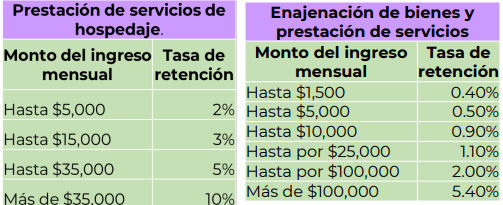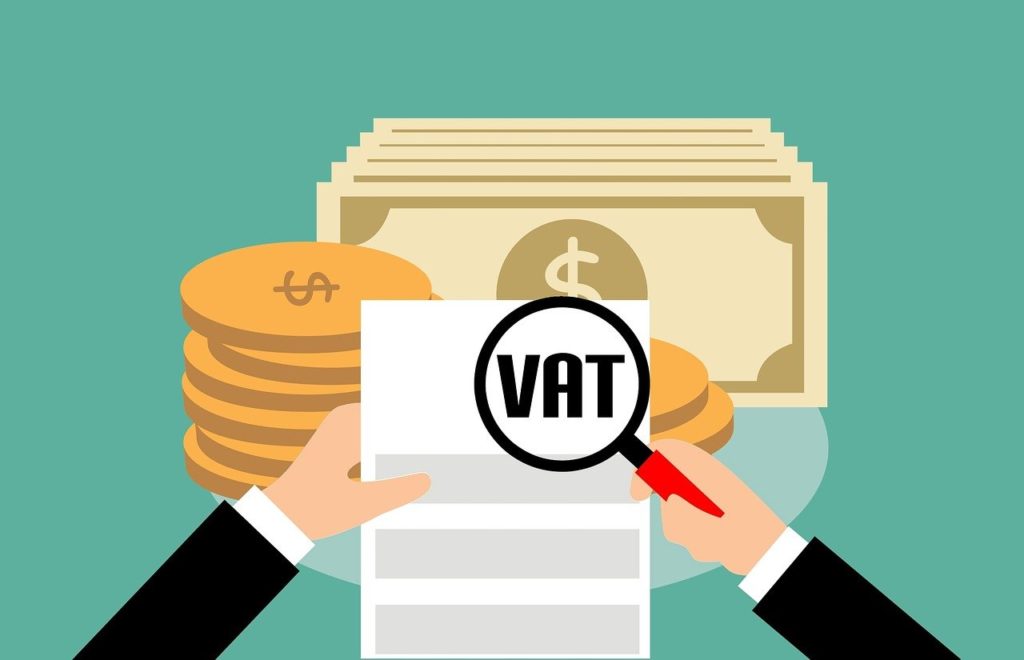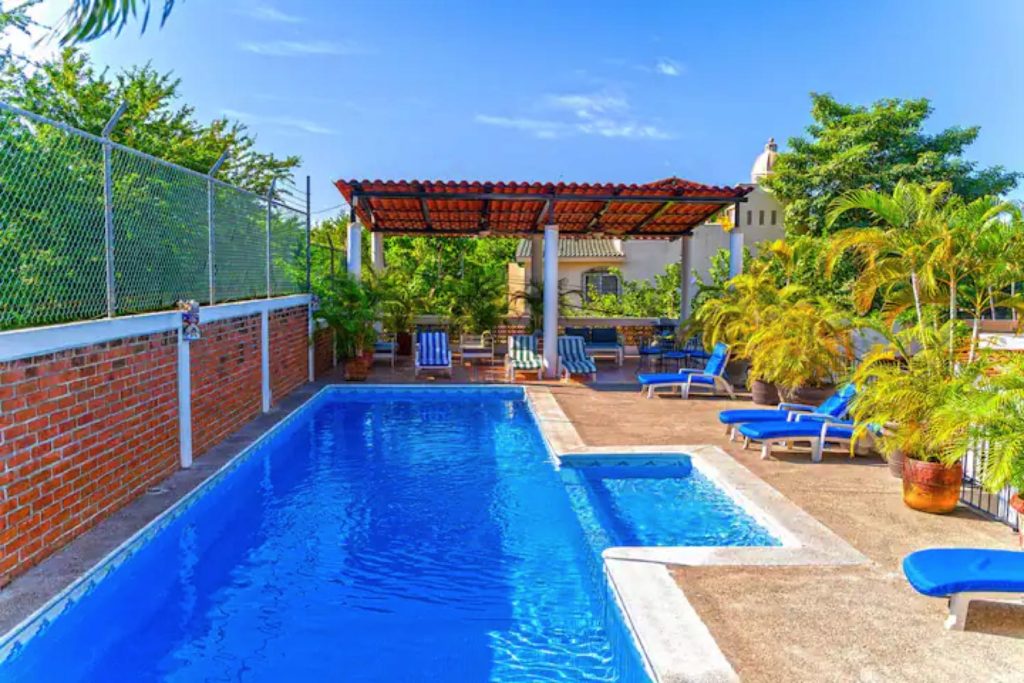The problem with homeowners renting their homes or condominiums and failing to pay taxes has existed for a long time in Mexico, but the recent changes in the June 1, 2020 tax code specify that not declaring income and not paying taxes is a violation of Mexican tax law with severe penalties if discovered.
Learn more about your tax obligations and how to be compliant with the income generated from your vacation rental or Airbnb property:
Note: The tax information presented in this article is exclusively informative in nature and should not be considered as advice of any kind, so it should be used only as a support tool. We recommend that you evaluate your particular case and fiscal responsibilities with a local tax advisor and accountant.
What taxes do I have to pay?
The rental income you generate is subject to the payment of taxes, such as Income Tax (ISR) and Value Added Tax (IVA). To have full compliance with your tax obligations in Mexico, you must have electronic control of your income and expenses, issue electronic invoices, and submit monthly tax declarations to the Tax Administration Office (SAT). Below are the differences between Mexico property taxes, ISR, IVA, and ISH.
Property Taxes
Annual property taxes are known as predial, and they are very low. The tax is calculated at a fraction of the value of the property, and it is due every January.
ISR
All income received by a resident or non-resident (including salaries, capital gains, bank interest, real estate, and rental income) is taxed in Mexico as ISR. The higher the profit, the higher the tax. Individuals are subject to income tax rates ranging from 1.92% to 35%. In this article, we’ll cover how to select the right income tax strategy for you.
IVA
IVA is a consumption tax imposed by the Mexican government on the sale of goods and services. In our case, the 16% sales tax is applied to the price of accommodation when a guest pays for their stay. It is collected when payment is made for the accommodation, and it is then remitted to the tax authorities.
ISH
Lodging Tax (ISH) is a tax that varies from state to state. Nayarit and Jalisco both set this tax at 3%, and it is similar to IVA, since it is passed on to the customer; that is, the guest is the one who pays the tax.
Owner Payout Example
In order to better explain how payouts to our property owners are handled, we came up with the following example where a guest reserved through Airbnb:
| TYPE | AMOUNT ($USD) |
| Reservation (7 nights x $100USD) | $700 |
| Sales Taxes (IVA) | $112 |
| Airbnb fee (3.0% + IVA) | $24.36 |
| Total Payout from Airbnb | $787.64 |
As a rental manager, Beach Please charges 20% commission, which would end up being $157.53 in this example. This means that the owner will receive a total payout of $630.11 USD. The owners will then have to pass along their portion of the Sales Taxes (IVA) to the Mexican tax authorities (SAT) which would be 80% of the $112 = $89.6.
In addition to the Sales Taxes, owner’s will also owe income taxes depending on their tax strategy, explained below:
What is an RFC and how do I obtain it?
The first step to pay taxes and meet your tax obligations is to obtain your tax ID known as the Federal Taxpayers Registry (RFC) with the Tax Administration Service (SAT). If you have economic activities in Mexico, rent a condo, sell a condo, buy a car, or have a job – then you need one.
Below are the steps to generate your own RFC to be able to declare taxes in Mexico.
- Get Mexican Residency (Temporary or Permanent)
- Make an appointment to a Mexican Consulate in your home country (see list of Consulate locations).
- You’ll have to prove economic solvency, own real estate in Mexico, have investments in Mexico, or have some sort of family relationship with a Mexican or foreign person who has residency.
- Next, you’ll have to go to an INM Immigration Office in Mexico (our closest INM office is in Nuevo Vallarta) within the first 30 days of arriving in the country. Here you have to show more documents (proof of address in Mexico, FMM form, etc) to get your official residency card.
- Get your RFC
- Now that you have a residency card, you can generate your Unique Population Registry Key (CURP).
- Make an appointment online for the SAT office. These can be difficult to get depending on the demand. The closest SAT office to us is near Costco.
- Go to your appointment at the SAT office, which will last 30-50 minutes usually. Don’t forget to take an empty USB stick, proof of address, CURP, residency document, and passport. Show up on time or else you’ll lose your spot!
- Congrats! Now you have an RFC number and a USB stick with very important files that your accountant will need.
- Fulfill your tax obligations
- Talk to your accountant and identify the best strategy & tax regime for your situation.
- Your accountant will register the digital stamps for invoicing on the SAT portal.
- Your accountant can now help you submit monthly financial declarations and one annual statement which need to be submitted by April every year.
Tax Strategy
If you file taxes in another country, you should know that you will not be double-taxed. Mexico has tax treaties with 32 nations, including the U.S. and Canada. For example, in the US it is possible to apply foreign tax credits from taxes paid in Mexico to help reduce your income tax burden. Avoid being double-taxed with a document that your accountant can provide stating that you already paid taxes on your income in Mexico.
Your “fiscal regime” is simply a system that the government uses to categorize you for tax purposes. Your accountant can help you determine the best category for you to minimize your tax burden. Although each case is different, there are 2 main tax regimes that we would recommend for our owners, depending on their residency status in Mexico:
- Technology Platforms Regime
- Simplified Trust Regime (RESICO)
1) Technology Platforms Regime
The tax laws for vacation rentals and tech platforms drastically changed in June 2020. They announced a brand new tax regime for “Technology Platforms” (e.g. Uber, Airbnb, Fiverr, etc) that is focused on taxing companies and foreigners that carry out operations in Mexico and for which they obtain income. In order to simplify tax compliance, they calculate your ISR taxes by a low fixed % of your total income:
“If you are a person with a business activity that sells goods, provides services or grants accommodation through the Internet through technological platforms, computer applications and the like, this system facilitates and simplifies compliance with your tax obligations.”
Some expenses can be deducted to lower your taxes, including property maintenance, gasoline, water bill, electricity, property taxes, and monthly HOA fees. The maximum tax rate is 10% (which contrasts with current rates that for higher incomes can reach up to 35%), making it ideal for Beach Please property owners.

2) Simplified Trust Regime (RESICO)
This regimen was specifically created for individuals with business activities, professional services, and rental properties.
If you are a Mexican citizen or if you have permanent residency (not temporary), you qualify for this brand new regime with very low tax rates between 1-2.5%. It is aimed at individuals who have incomes that do not exceed $3,500,000 pesos, and it does not allow tax deductions from expenses such as medical services, dental work, etc.

Deductible Expenses
Remember that there are a variety of expenses that you can deduct (depending on your tax strategy and economic activity), such as:
- Water bill
- Electricity
- Internet service
- Cleaning products
- Repairs
- Monthly HOA payments
- Furniture
It is important to keep all proof of expenses and get an official invoice (factura) under your RFC in order to reduce your taxable income.
Professional Accounting Services
Get a monthly financial report and a personalized tax strategy to be in full compliance with your Mexico tax obligations:
- Initial setup:
- RFC (Taxpayer Identification Number) registration.
- Opening a Mexican bank account (if you don’t already have one).
- Monthly accounting services:
- Tax declarations: Monthly & annual tax declarations.
- Utility payments: Electricity, water, cable TV, phone, internet, and gas. Other payments include your property tax (predial), bank trust (fideicomiso), & homeowner’s association fees.
- Payment of property taxes every January.
- Add-ons:
- Migratory processes (temporary or permanent visas)
Since each tax strategy varies from person to person, we recommend all property owners schedule a free consultation with our accounting partners to set up a personalized financial plan and to clarify any doubts or questions you may have.
Recommended Local Service Providers
- Taxes and RFC registrations: Equilibrium Tax & Law (https://en.equilibrium.mx/)
- Immigration help: KL Mexico Legal & Migration Solutions (facebook.com/KLMexico/)
- Helping foreigners living in Mexico: Saira Hernandez Attorney at Law (sairataylor@outlook.com)




